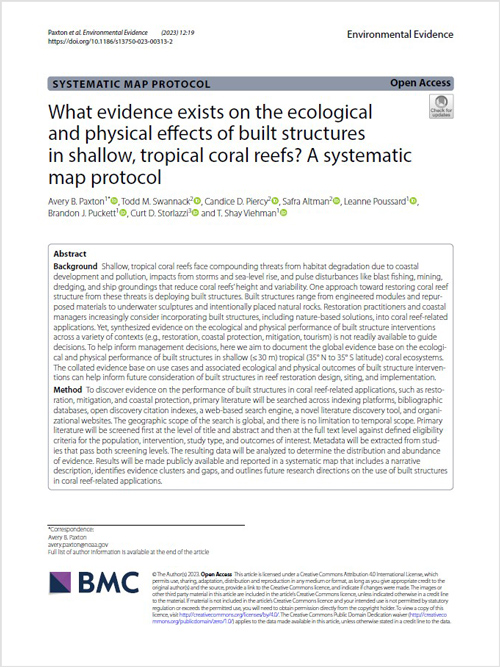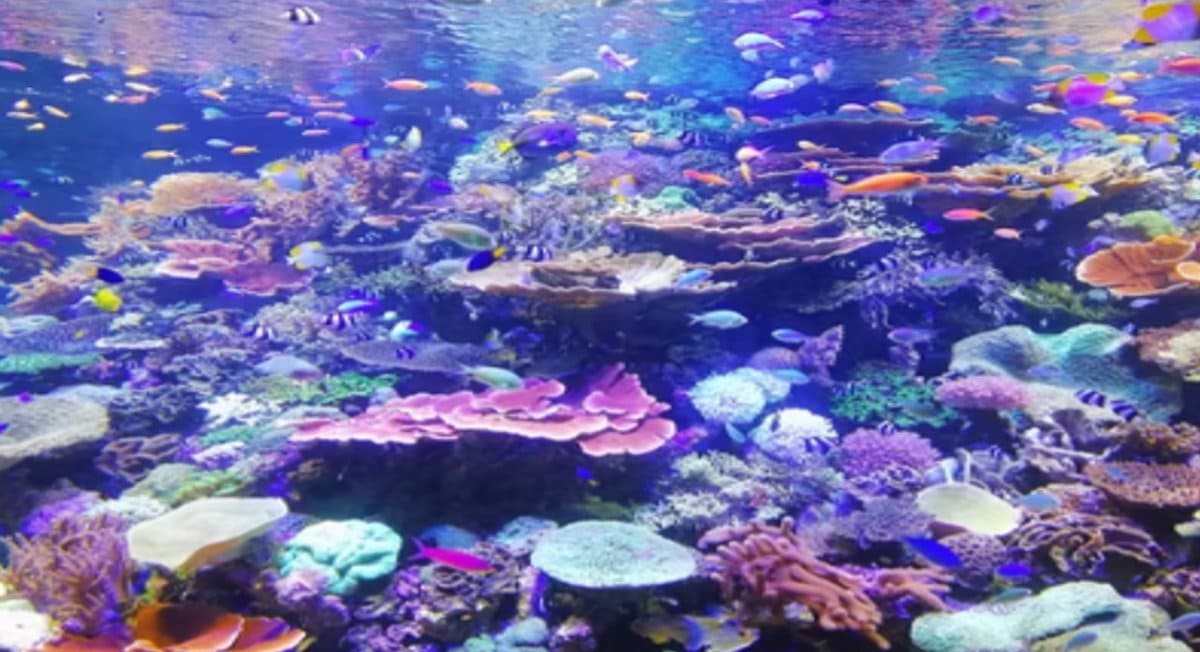Background:
Shallow, tropical coral reefs face compounding threats from habitat degradation due to coastal development and pollution, impacts from storms and sea-level rise, and pulse disturbances like blast fishing, mining, dredging, and ship groundings that reduce coral reefs’ height and variability. One approach toward restoring coral reef structure from these threats is deploying built structures. Built structures range from engineered modules and repurposed materials to underwater sculptures and intentionally placed natural rocks. Restoration practitioners and coastal managers increasingly consider incorporating built structures, including nature-based solutions, into coral reef-related applications. Yet, synthesized evidence on the ecological and physical performance of built structure interventions across a variety of contexts (e.g., restoration, coastal protection, mitigation, tourism) is not readily available to guide decisions. To help inform management decisions, here we aim to document the global evidence base on the ecological and physical performance of built structures in shallow (≤ 30 m) tropical (35° N to 35° S latitude) coral ecosystems. The collated evidence base on use cases and associated ecological and physical outcomes of built structure interventions can help inform future consideration of built structures in reef restoration design, siting, and implementation.
Method:
To discover evidence on the performance of built structures in coral reef-related applications, such as restoration, mitigation, and coastal protection, primary literature will be searched across indexing platforms, bibliographic databases, open discovery citation indexes, a web-based search engine, a novel literature discovery tool, and organizational websites. The geographic scope of the search is global, and there is no limitation to temporal scope. Primary literature will be screened first at the level of title and abstract and then at the full text level against defined eligibility criteria for the population, intervention, study type, and outcomes of interest. Metadata will be extracted from studies that pass both screening levels. The resulting data will be analyzed to determine the distribution and abundance of evidence. Results will be made publicly available and reported in a systematic map that includes a narrative description, identifies evidence clusters and gaps, and outlines future research directions on the use of built structures in coral reef-related applications.



